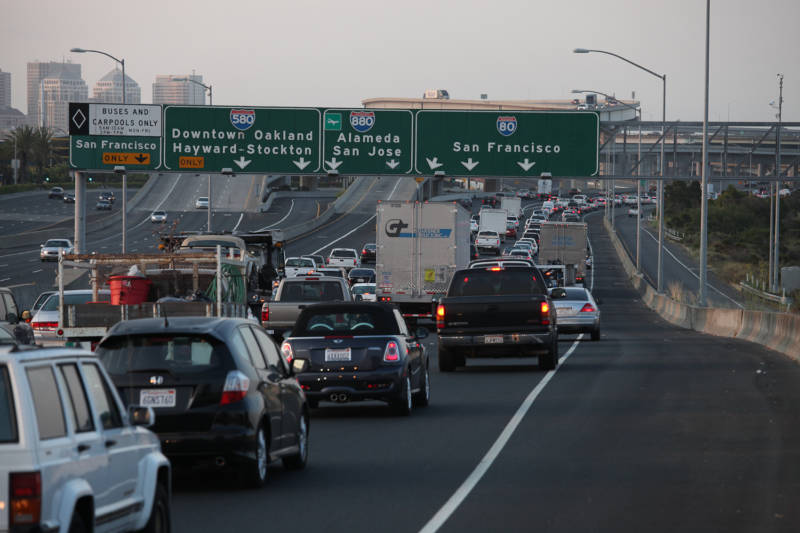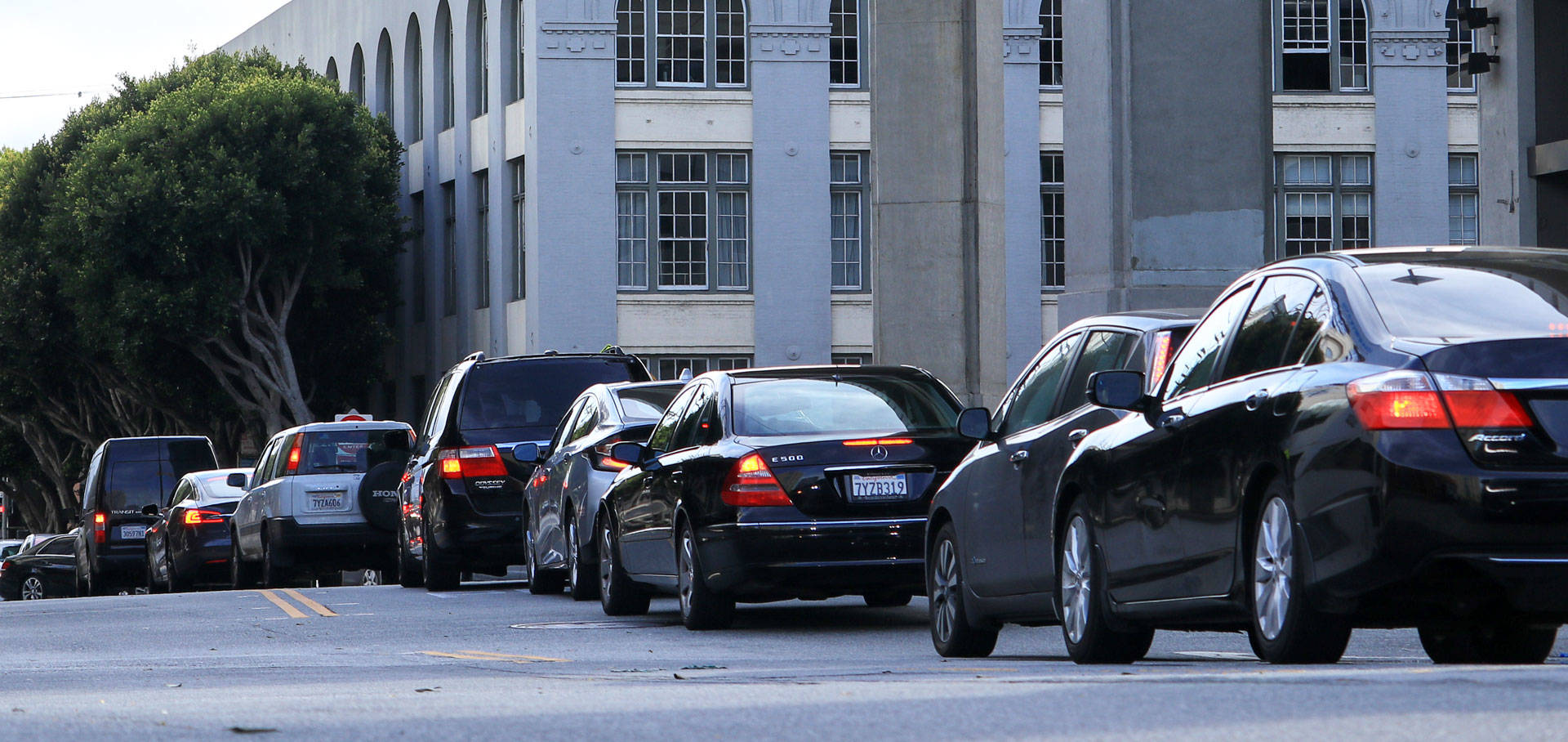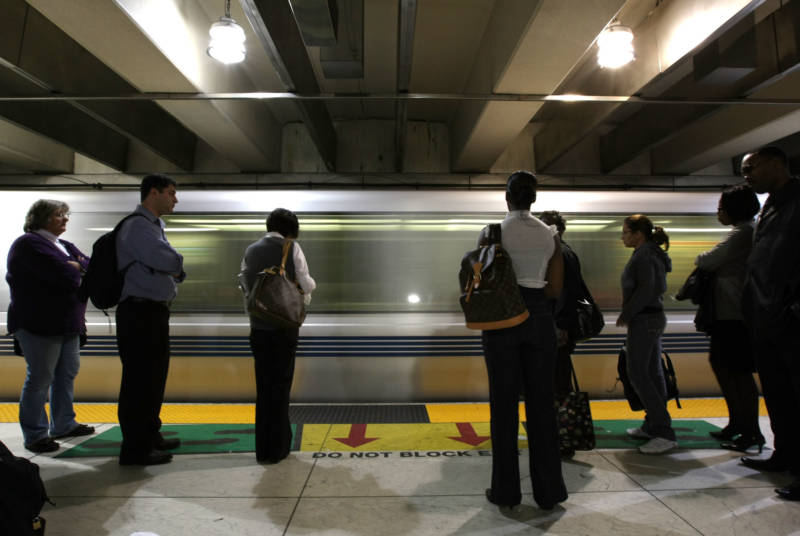Long commutes, traffic woes and calls for more mass transit solutions. As the Bay Area gets bigger, the transportation problems seem to be getting worse.
Dan Brekke, KQED’s resident and self-proclaimed transportation nerd, participated in a Reddit AMA Thursday to answer all of your burning transportation questions, from what the worst commutes are, to the future of public transit in the Bay Area.
Below are some highlights from the AMA, which have been edited and condensed for length and clarity.
What is the worst commute you know about?
Aren’t they all pretty bad? I mean, just about every bridge approach is stacked up well before dawn, and they often stay that way most of the day.
That said, my idea of the number one grimmest commute is the westbound trip from San Joaquin County (Stockton, Tracy, Patterson, etc.) across the Altamont Pass on I-580. It’s a long, long journey — a genuine supercommute in Census Bureau lingo — and if you listen to the morning traffic reports, it seems to slow to a crawl by 5 or 5:30 a.m. every day. The trip back east in the evening is epic, too, and many drivers figure they’re going to outsmart the crowd and take to some of the back roads — Tesla/Corral Hollow and Patterson Pass — to get back to the San Joaquin Valley. Problem is those roads are narrow and full of twists and turns, but people are driving them pretty hard anyway.
If you want a more objective answer to the question, the Metropolitan Transportation Commission ranks the top 10 and top 50 most congested locations in the Bay Area.

What are the biggest blockers to getting out of this traffic situation?
The first thing that comes to mind is the fact we have so many different transit agencies — more than two dozen — and so many different government entities to coordinate. It has never really gone well, and the agency that manages federal and state funding for our regional projects — the Metropolitan Transportation Commission — must balance the scores (or hundreds) of local interests that compete for transportation cash.
Funding is always an issue, too, although Bay Area voters have proved pretty willing to get on board with sales taxes, parcel taxes, higher bridge tolls and other levies to help solve the many challenges we’re facing.
Then there’s the time it takes to get stuff built and online: There’s a consensus that the multiple levels of environmental and other regulatory approvals that are typically needed to build a project take a lot of time and extend the time it takes to build projects and adds to their expense.
That’s not always the case, though — the current Caltrain electrification project is an example of a project that secured funding and began work relatively quickly.

